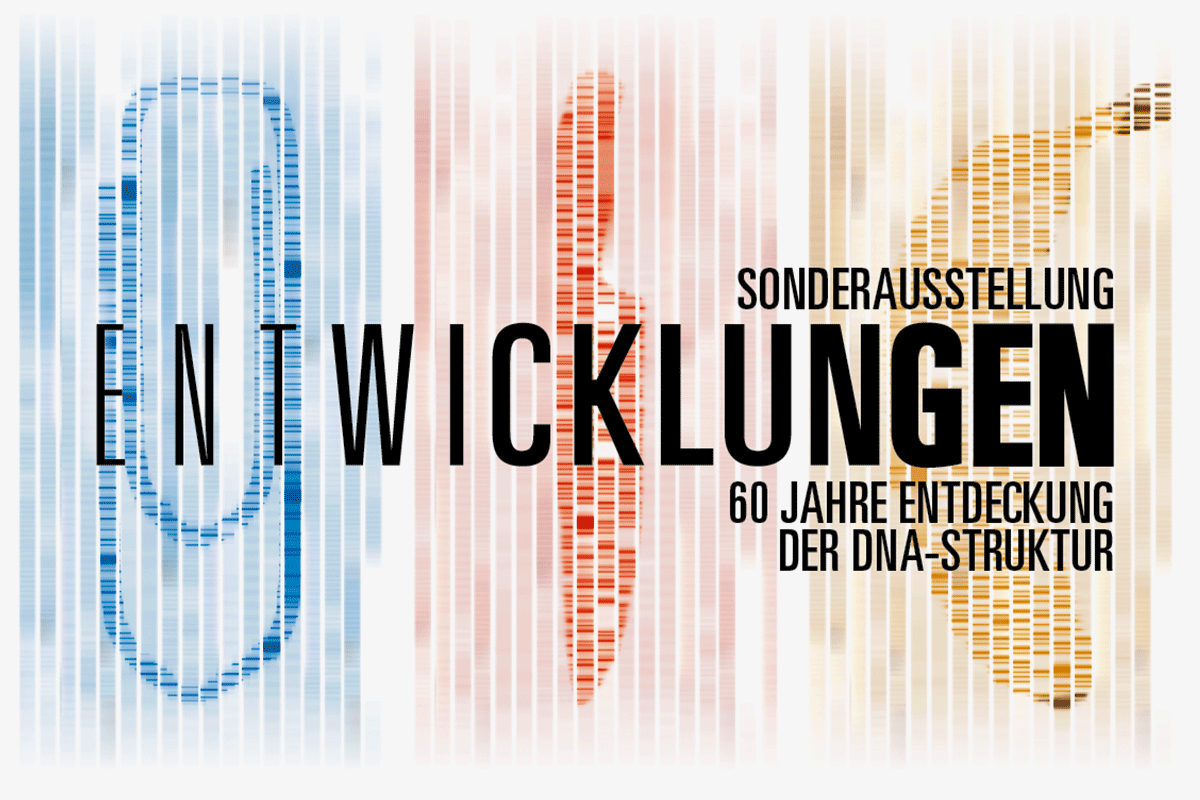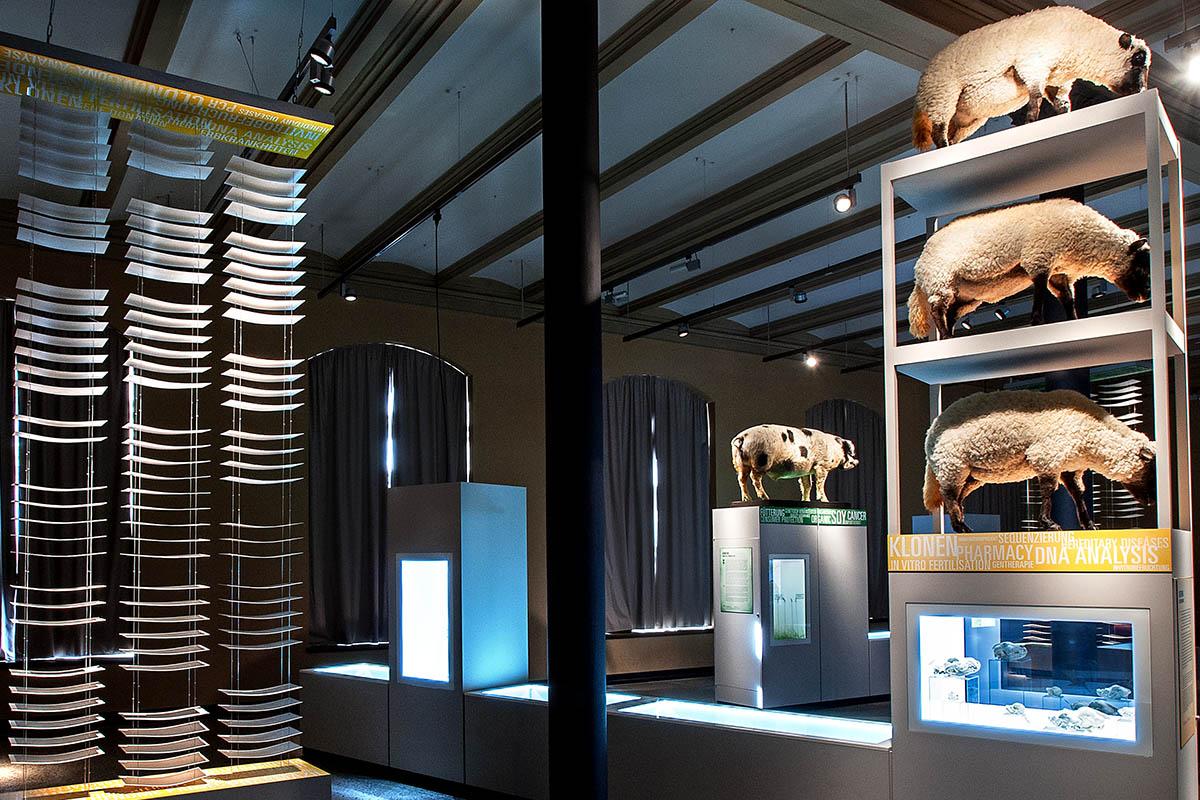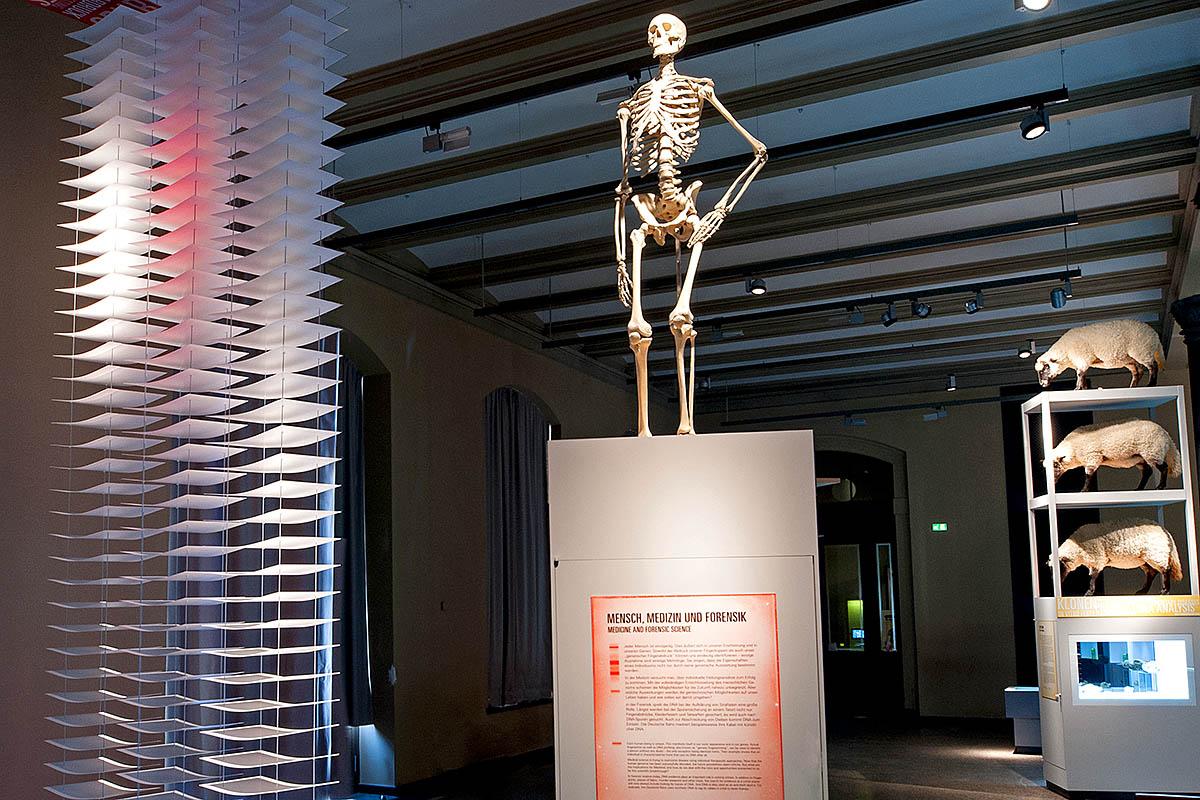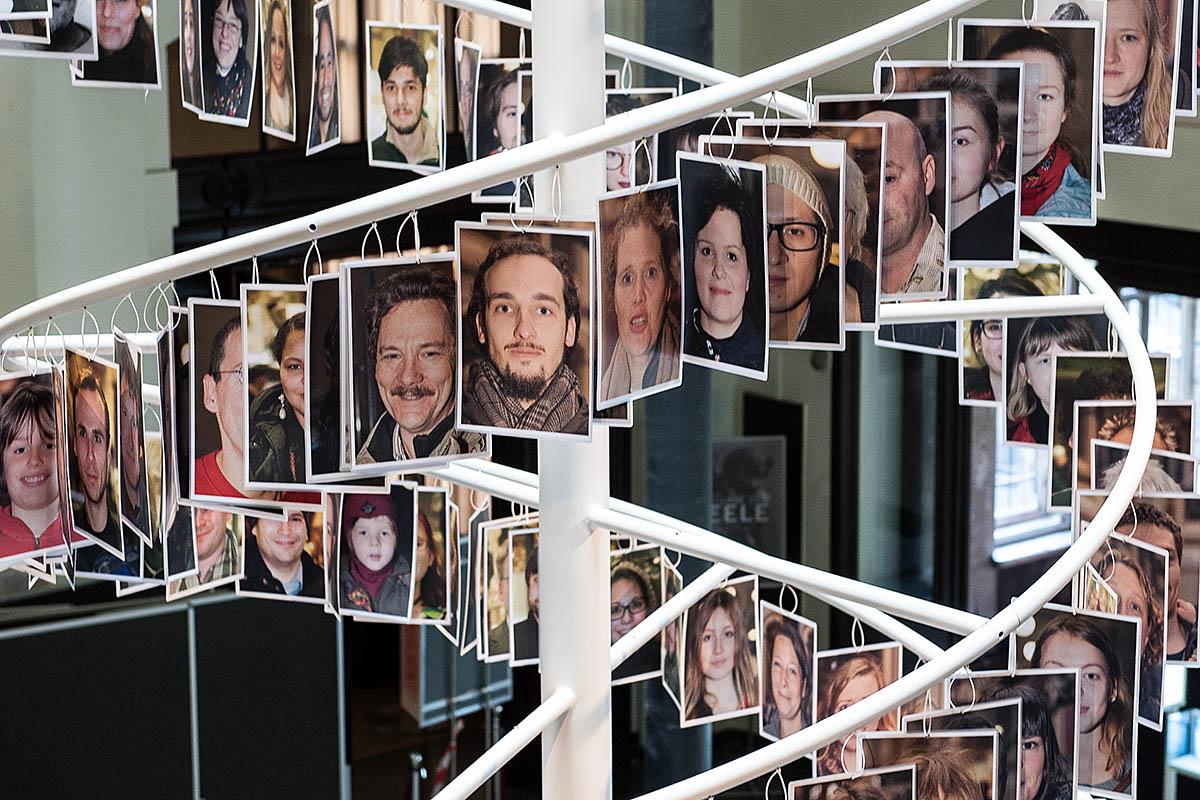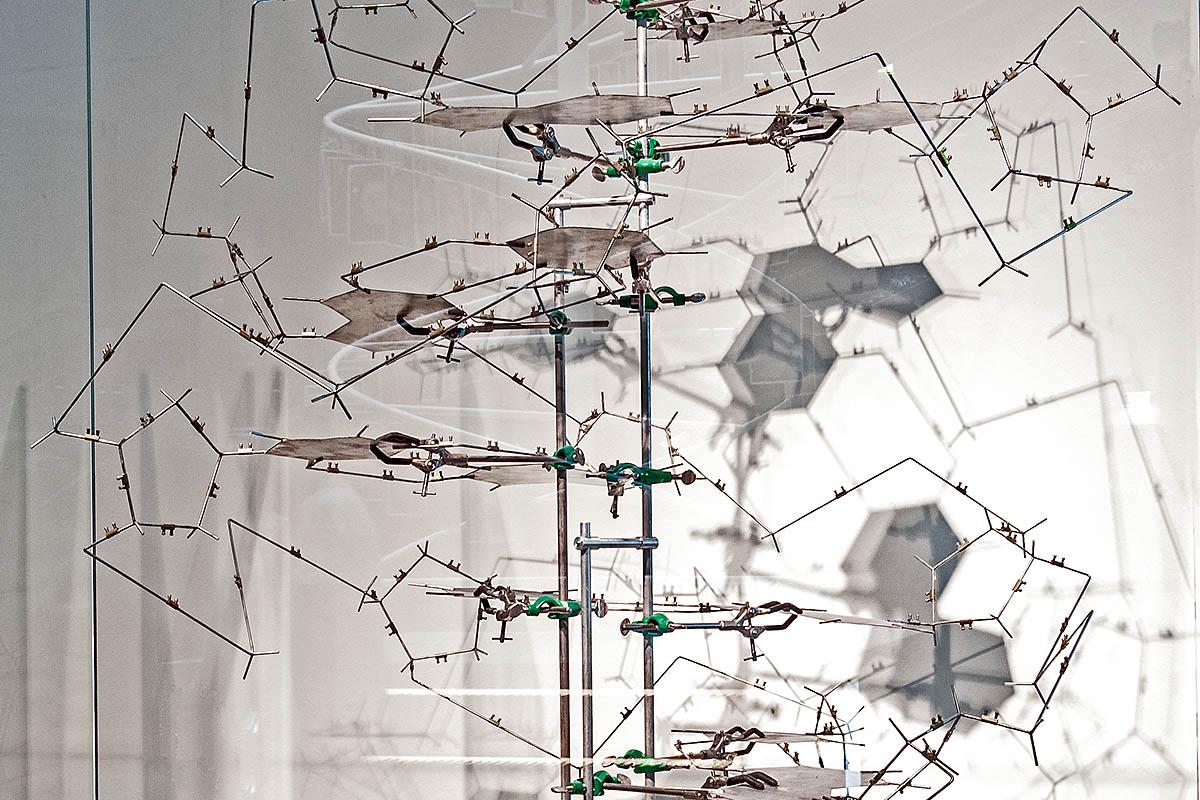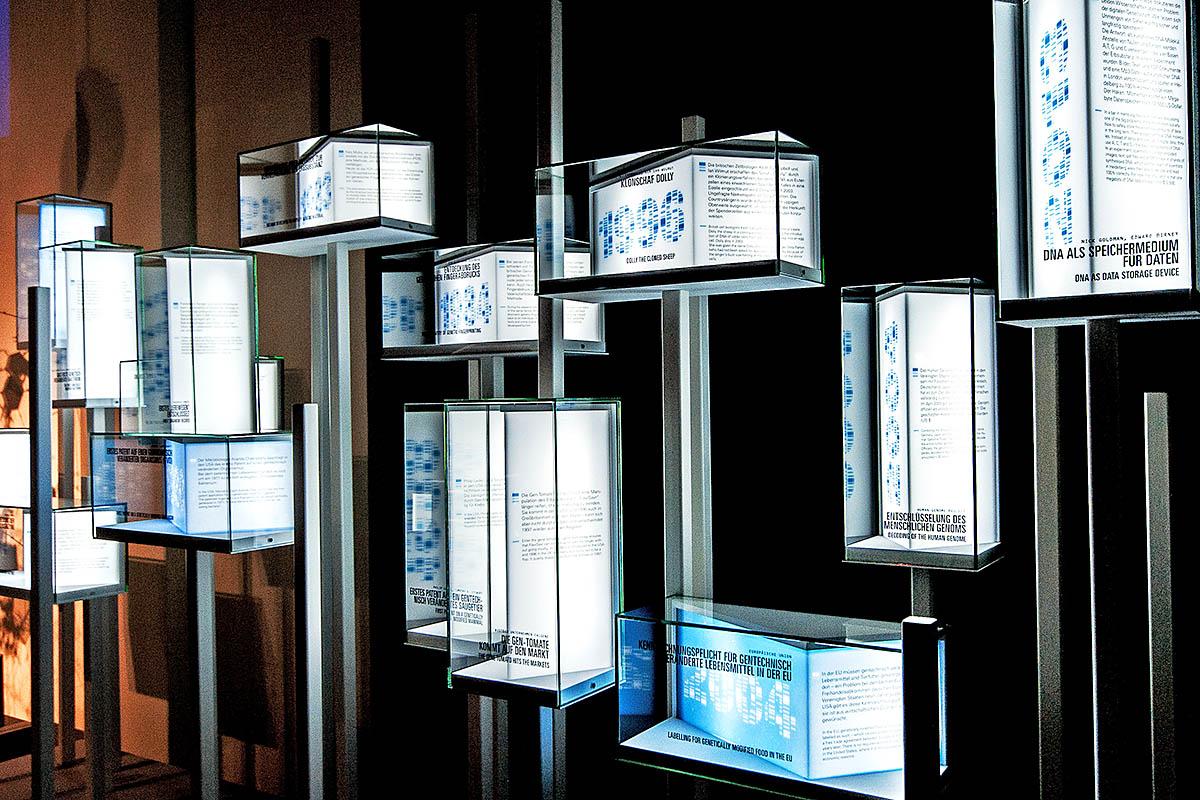23 April 2013 - 6 January 2014
Happy Birthday DNA! The Museum für Naturkunde Berlin dedicates a special exhibition to DNA, entitled Developments - 60 Years Discovery of the Structure of DNA, showcasing its discovery, the triumphs of DNA research and surprising facts as well as the Museum’s current research projects.
The Museum für Naturkunde presents a special exhibition celebrating the 60th anniversary of the discovery of the double helix structure.
Deoxyribonucleic acid (DNA) is turning 60! Not exactly DNA– its structure– or, to be more precise, our knowledge of it. On April 25th 1953, the journal »Nature« publishes an article by James Watson and Francis Crick, the genetic molecule as double helix. The article ushered in a scientific and technical revolution that was to change our lives and increasingly our day-to-day activities. DNA is omnipresent - gene technology, pharmaceutical developments, paternity testing, genetic fingerprinting, the early recognition of genetic conditions, cloning and biotechnology – none of these would figure in our lives without knowledge of DNA and its structure. Nevertheless, many details about the history of the discovery of DNA – what it can do and what it cannot do – are little known.
How much Neanderthal is in us ? Could Jurassic Park really work? Can I clone my pet? Is Papa my father? What is my burger made of? Research and understanding of DNA are developing at a frenzied rate. But should any method be used, because it is theoretically possible? What are the advantages, what risks are there? Many Questions for which the special exhibition provides answers.
